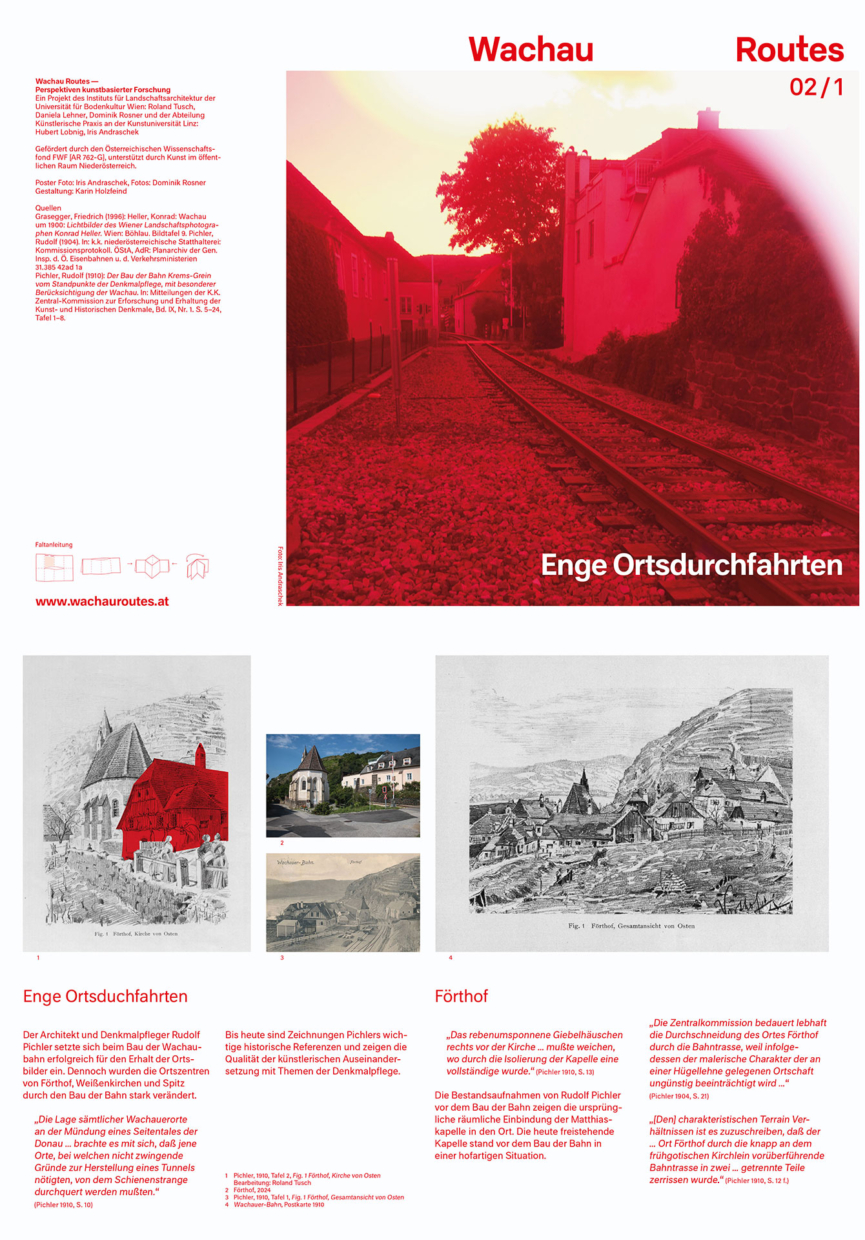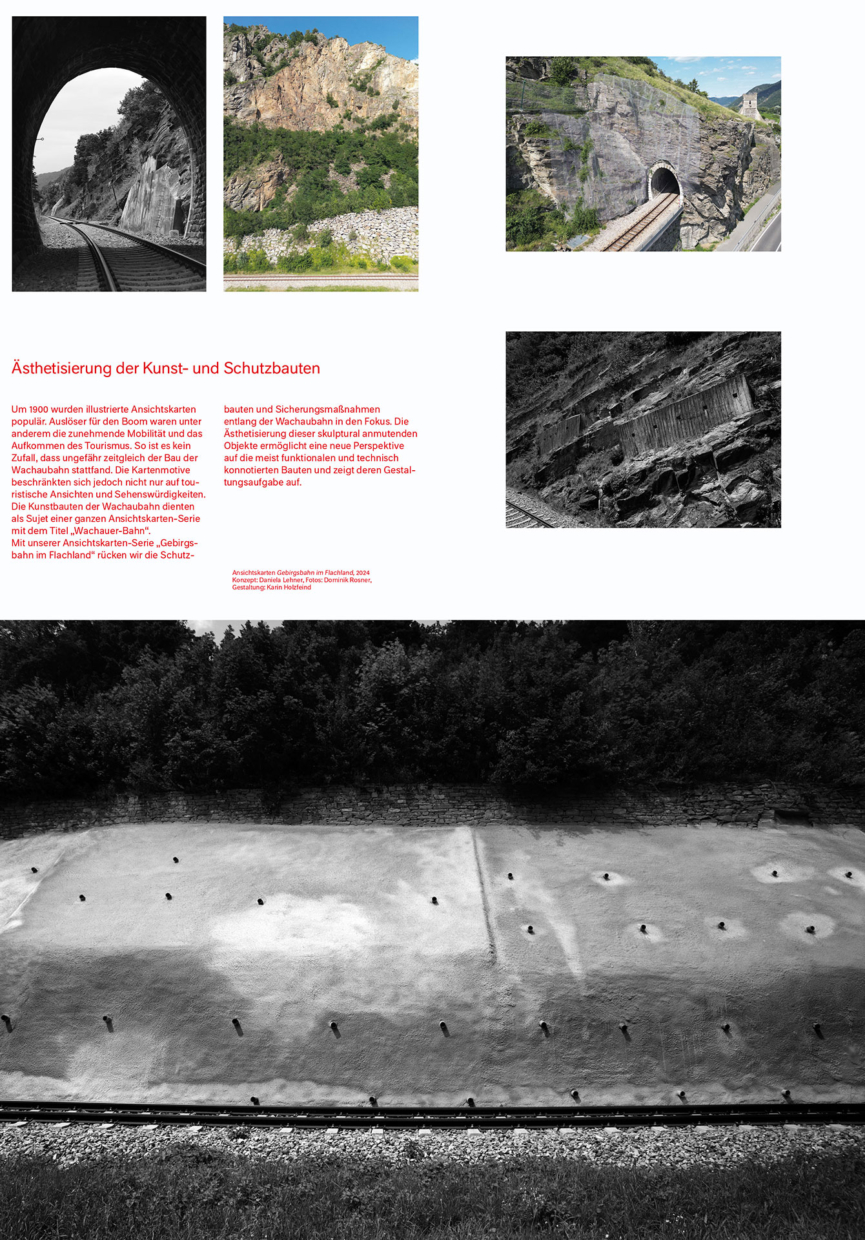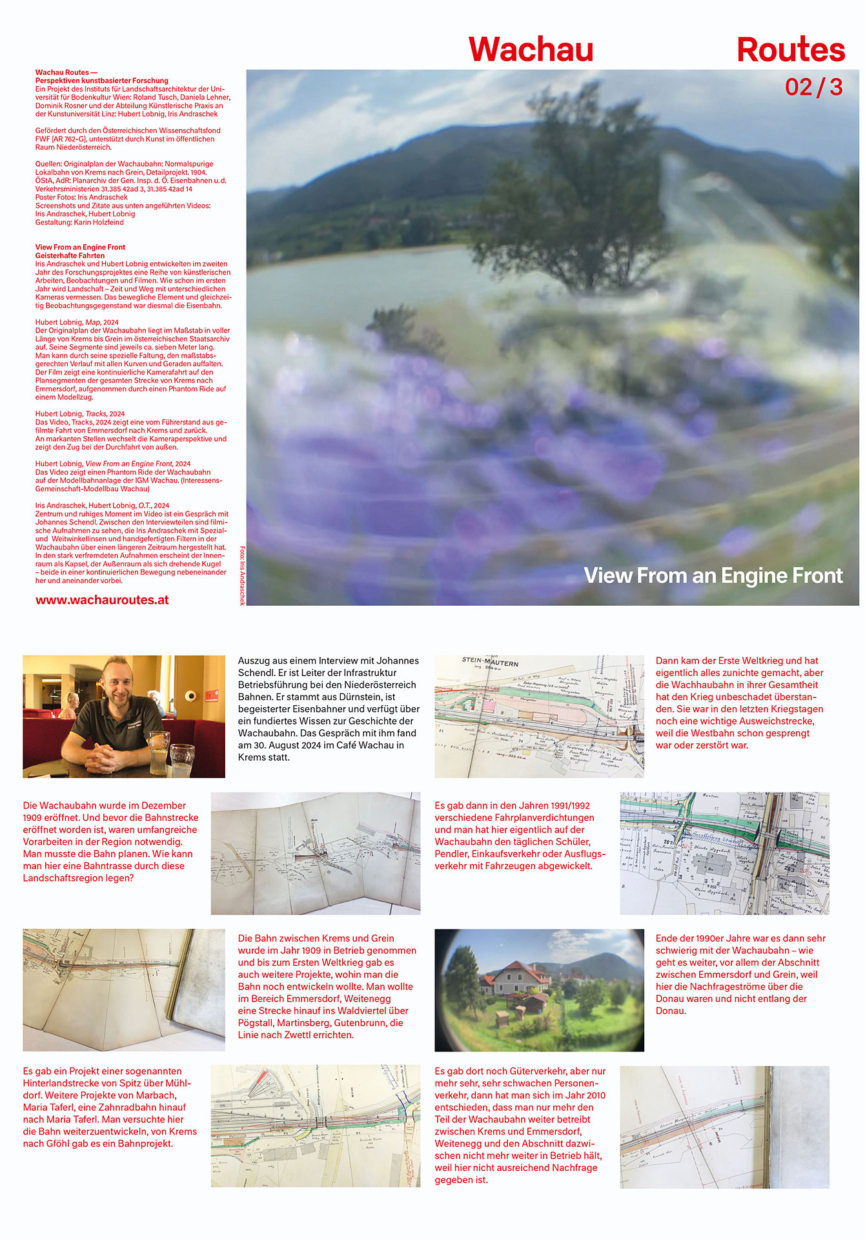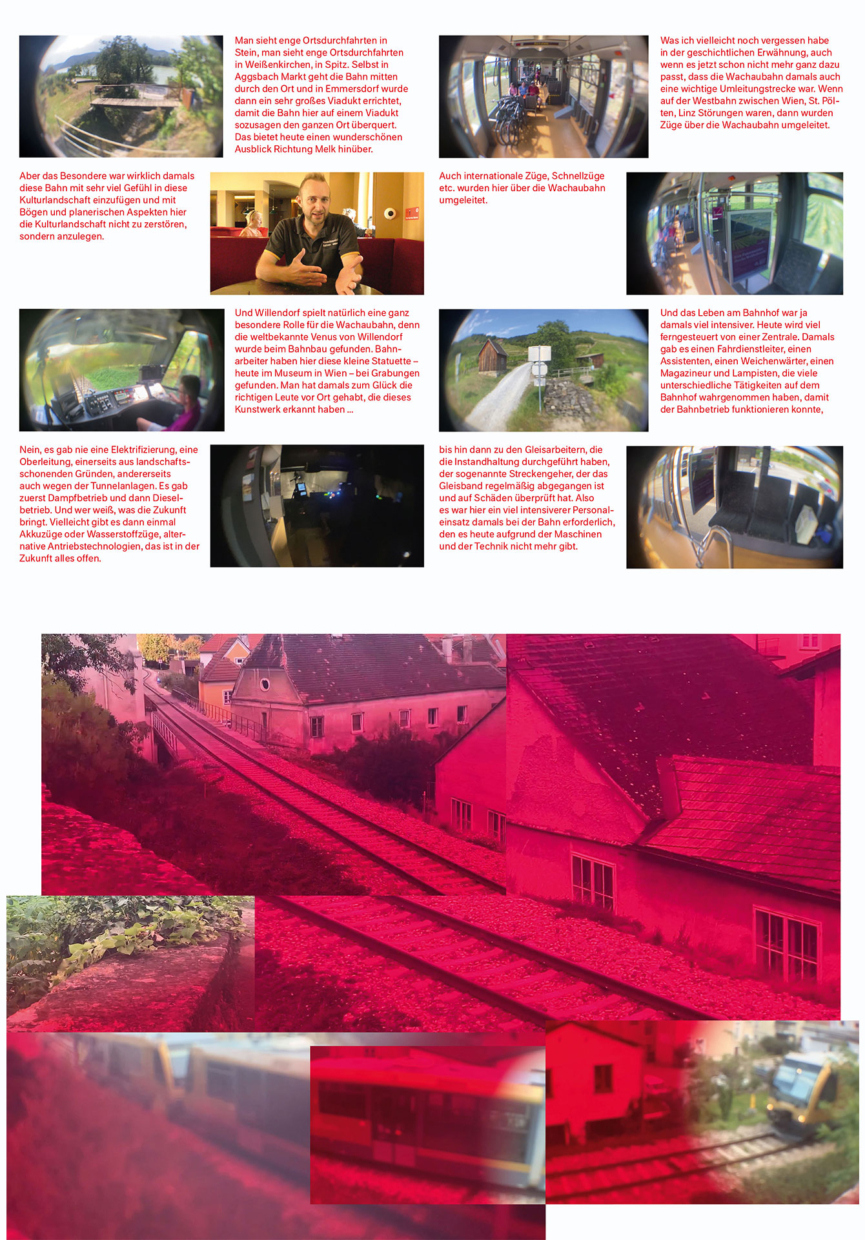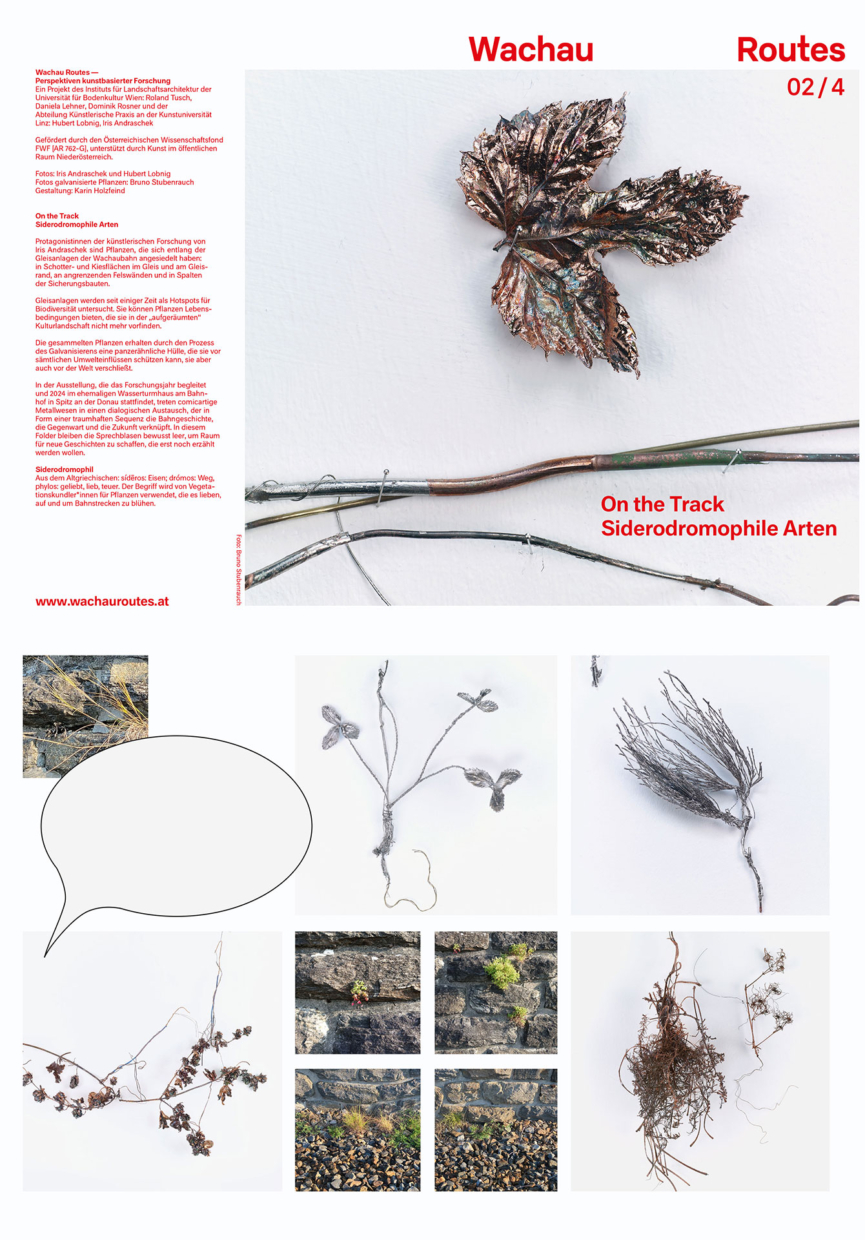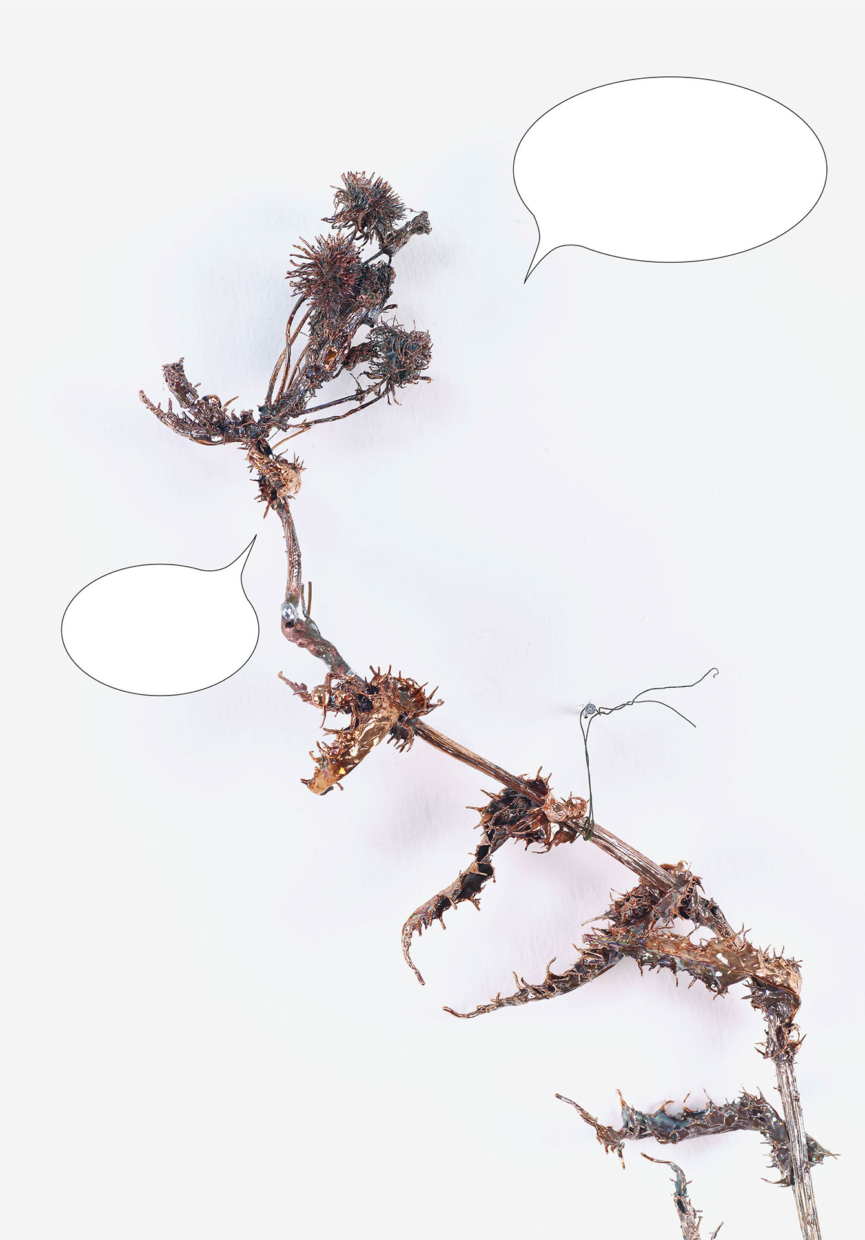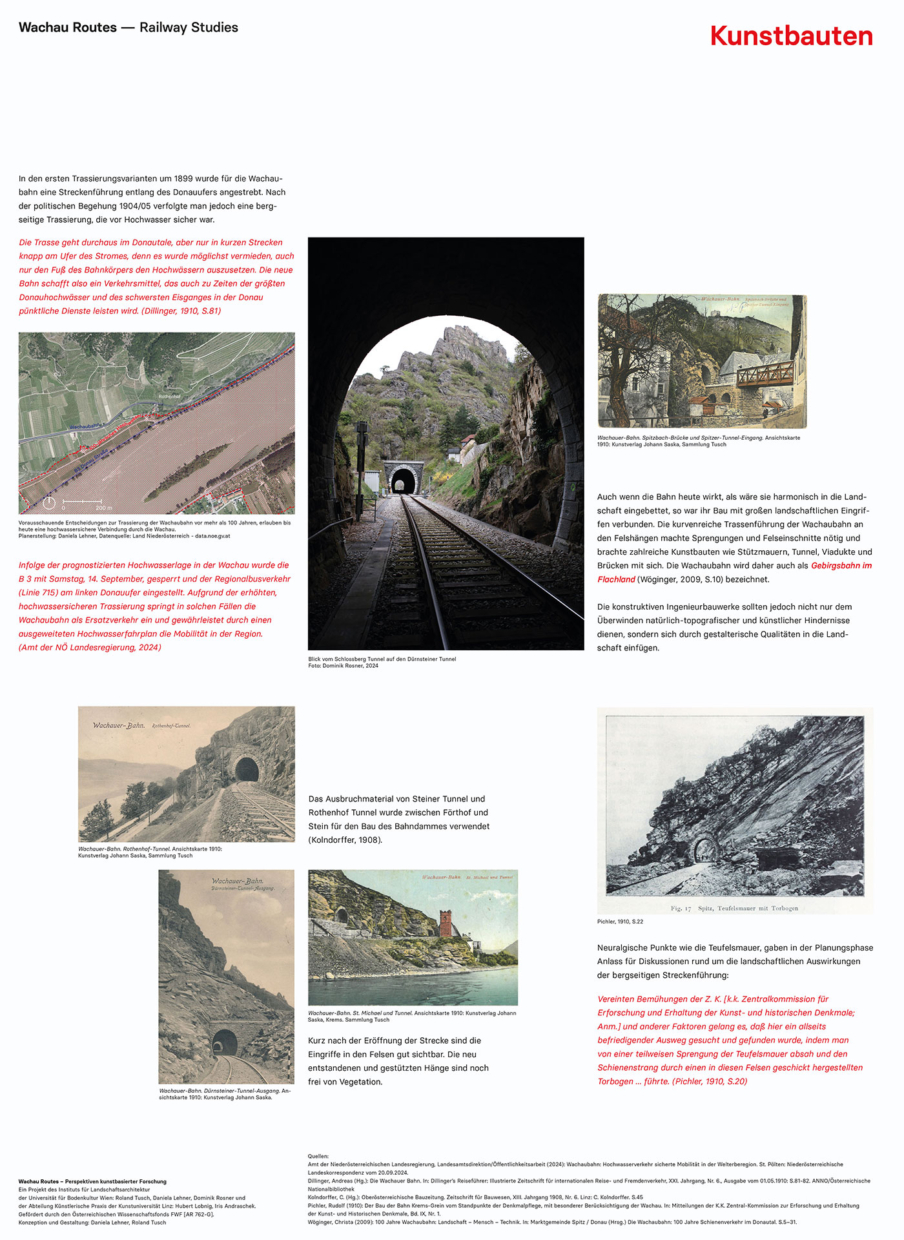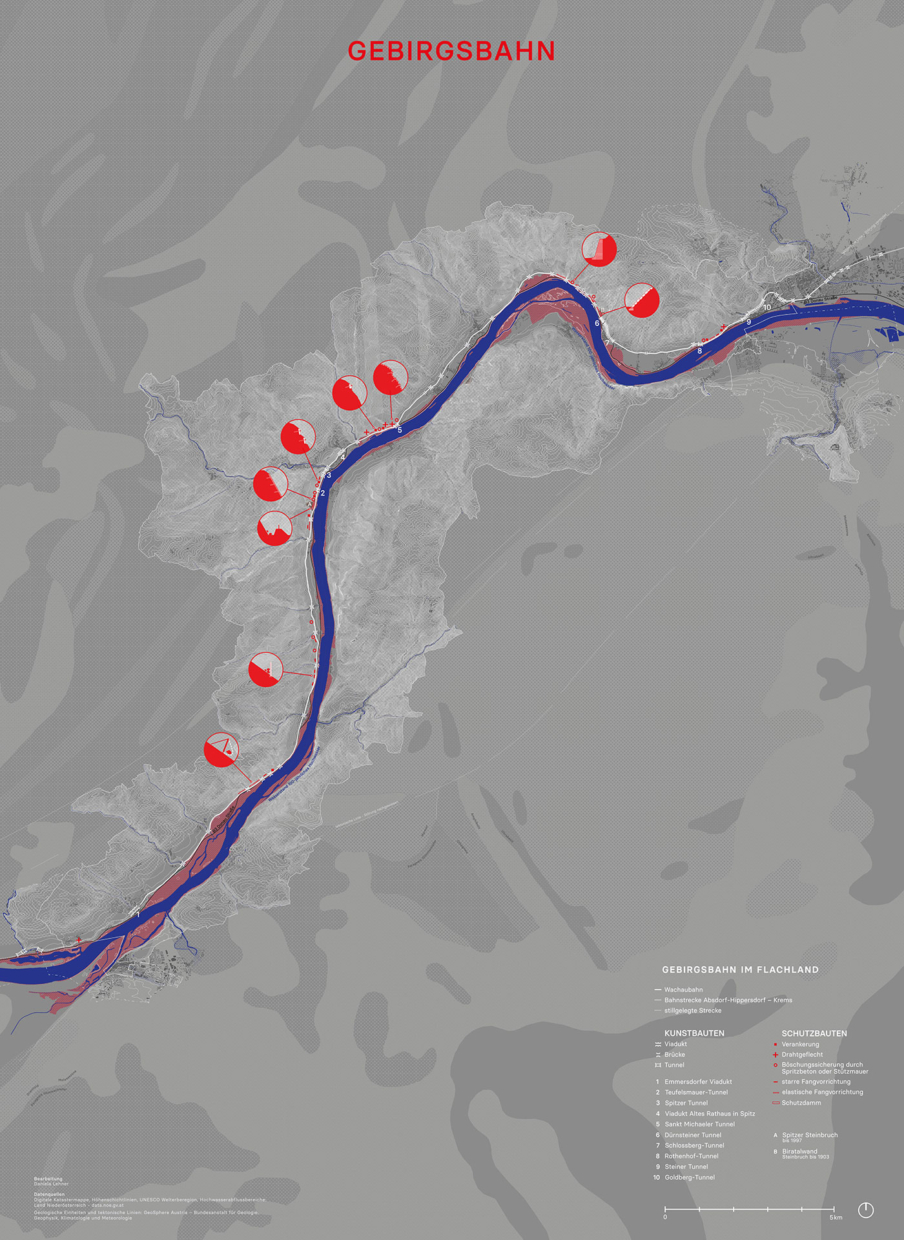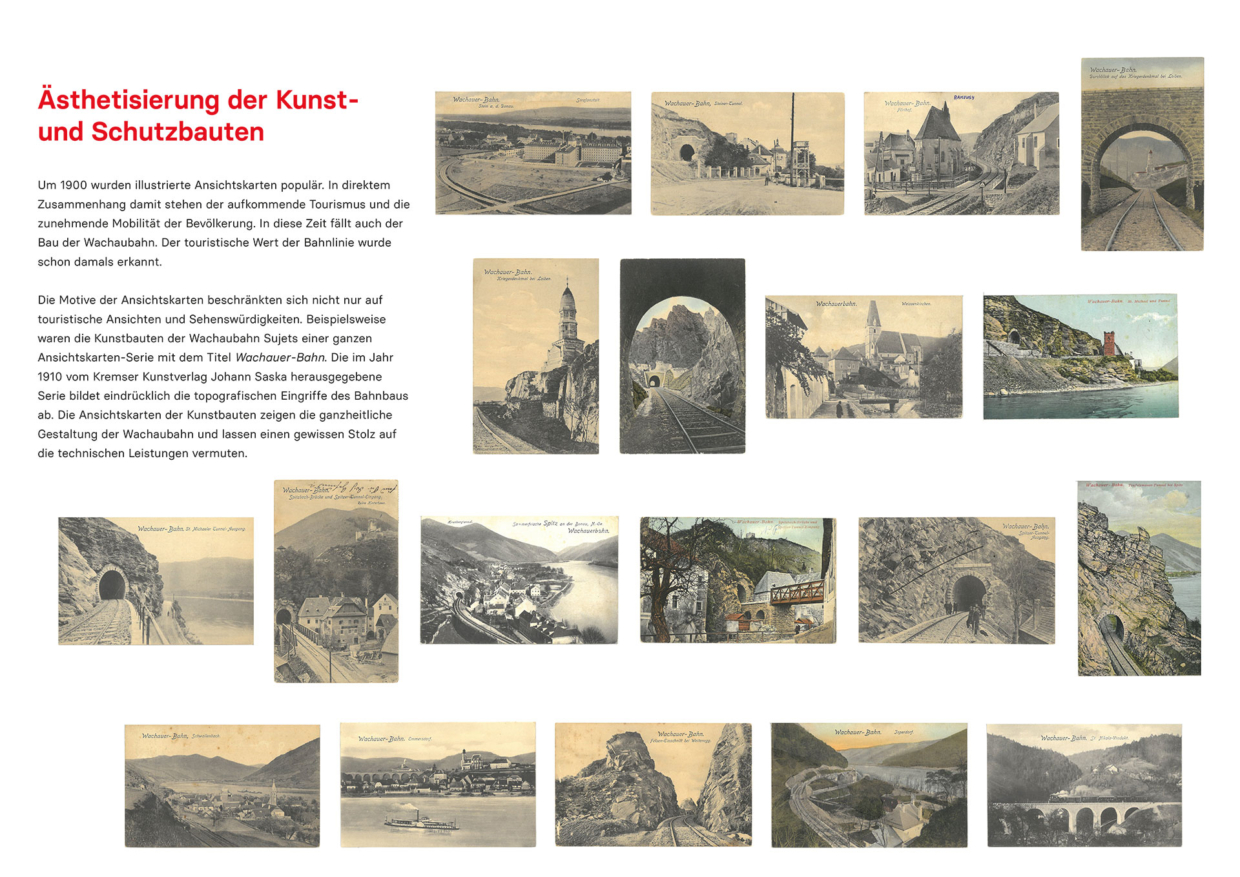On the tracks
Since 1909, the Wachau can be experienced from the railway. The train offers a unique perspective of the landscape. The elevated railway line provides a flood-proof transport connection through the Wachau. The railway’s current appearance, seamlessly integrated into the landscape, was the result of significant interventions. The route required negotiations and inspections with a large number of participants, demolition of buildings, rock cuttings, blasting, material movements, the construction of tunnels, viaducts and bridges as well as protective structures against rockfalls. In the Railway Studies we present the results of our work: artistic, landscape and design-related perspectives on the Wachau railway. We examine the conditions, design and use of the railway infrastructure, as well as the view of the railway in motion.
As with the Road Studies, the starting point for the work is archive research into the history of the Wachau railway’s origins and development. Conversations with local residents and an employee of the railway company Niederösterreich Bahnen provide additional perspective. The intensive examination of the railway on site and numerous journeys by train reveal aspects that are often overlooked in its everyday use. The research focuses on the design qualities of engineering structures, narrow passages through villages, plant communities accompanying the railway and the filmic perception and documentation of the landscape from the train.
In a final exhibition in the former water tower at Spitz an der Donau railway station, artistic works, film and photographic recordings are interwoven with landscape architectural investigations. The results are summarised in four thematic leaflets. The digital version of the leaflets is available here, as are the artistic film works and further railway studies.
